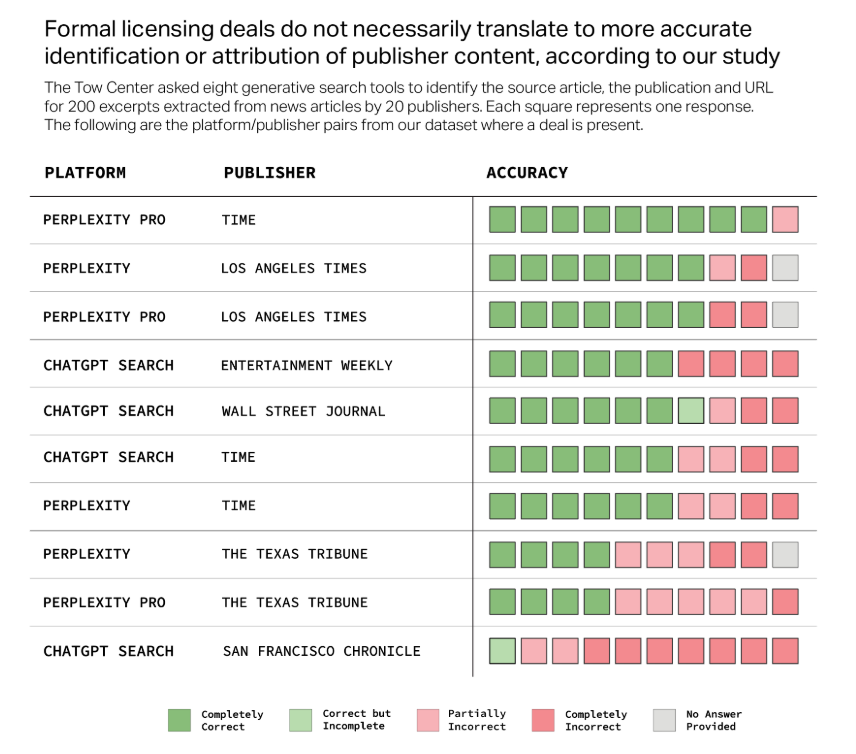Developing with AI
How will AI impact our economy, and who will be affected first? The work of academician Adam Mastroianni helps us understand this more clearly. The problems related to the strongest links best match the current capabilities of the technology. Recent studies confirm this conclusion: don't blindly rely on references verified by a Large Language Model (LLM). Consider using an AI-based search assistant instead.
'There are two types of problems in the world: strong-link problems and weak-link problems'.
In the case of weak-link problems (WLP), the overall quality of a product or service depends on the weakest link in the production process. Improving quality can be achieved by reinforcing or eliminating these weak links.
Food production is a good example of this. If food is unfit for consumption or toxic, it is worthless. Avoiding this scenario is what Mastroianni refers to as a WLP. According to him, the Federal Agency for the Safety of the Food Chain has a strong interest in allocating its limited resources to address these weak links, rather than focusing on controlling fats in foods that are already safe.
The world is full of weak-link problems (WLP). A single defective component can cause a modern car to break down. A new pair of trousers is only useful if it fits, regardless of the quality of the buttons. And a budget is only effective if it is balanced, regardless of the number of promising measures it contains.
In contrast, strongest link problems (SLP) are determined by the strongest link.
For example, winning medals at the Olympic Games for your country. While it's great that many young athletes are passionate about their sport, only the best will represent their country.
Similarly, bold capitalists may invest heavily in each of their projects, but the overall performance of a fund is ultimately determined by a few fast-growing players.
And while having many series and movies to choose from may have some added value, in reality, we only have time to watch one series per week, and its quality determines our level of satisfaction.
What kinds of problems can AI currently help us with?
In recent decades, we have automated a growing number of tasks thanks to computers. These logical machines apply clear rules infinitely and uninterruptedly. We outsource measuring, counting and control work to relatively simple software that rarely disappoints us.
But this is not how the current generation of LLMs works.
A recent study by the Columbia Journalism Review (CJR) reveals that virtually all popular chatbots fail when it comes to simple searches. Moreover, the most well-known chatbots exaggerate the quality of their search results the most. And expensive licencing agreements for specific content (such as those between OpenAI and The Guardian) don't guarantee better search results either.

The strongest link for better ideas
Where do we already see added value today?
The combinations that make bots the go-to for current generations can be complementary to creative tasks such as programming, designing, and writing.
It is, therefore, not surprising that the adoption rate of LLMs for carrying out these tasks has increased sharply in recent times. A recent study by Stanford researchers shows that businesses, organisations and consumers seem to be using this technology more and more. Between 2022 and 2024, researchers found that LLM-assisted language was used in 24% of the more than half a million corporate press releases they collected. By the end of 2024, the share of this type of communication reached a ceiling. According to researchers, this may indicate a saturated adoption rate, but also the emergence of more sophisticated models, whose use is more difficult to detect.
Improved texts and other content, as well as faster production, offer added value. However, this will not lead to a significant acceleration in economic growth. To achieve this, a more comprehensive approach is needed: AI-powered science, and a tireless, passionate army of AI researchers and analysts, increasingly referred to as agents.
This may sound like science fiction but a recent article demonstrates that current LLMs can achieve this if they are well-coached. SAKANA AI produced three highly credible research products at a total cost of less than $15 per unit. If this approach proves to be scalable and robust, the prospect of a compressed Renaissance 2.0 – with a surge of scientific discoveries unfolding in a matter of weeks rather than years – no longer seems so far-fetched.
The opinions expressed in this blogpost are the authors' and do not necessarily represent the position of BNP Paribas Fortis.


